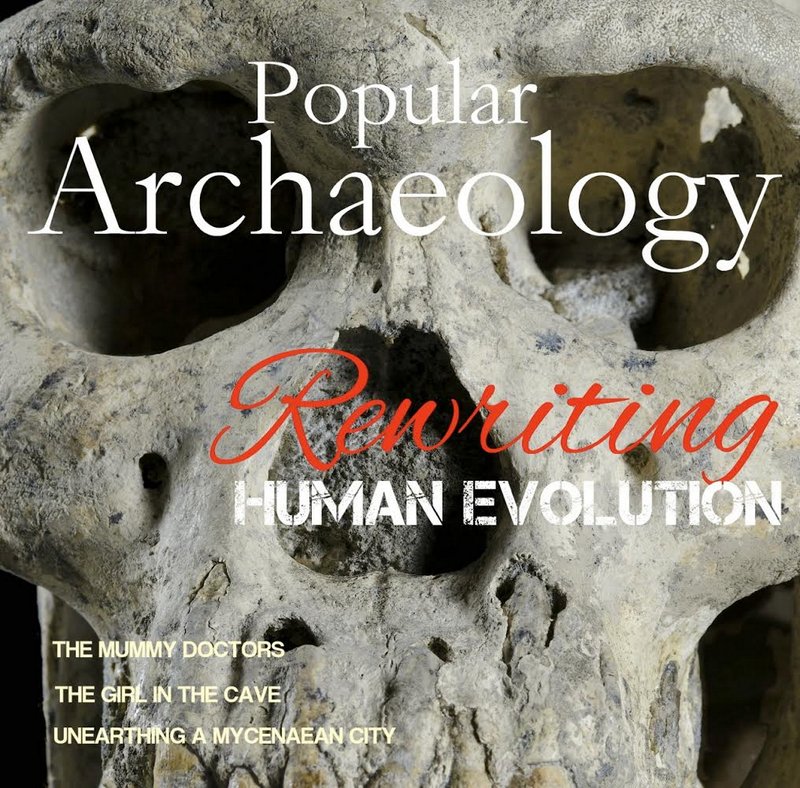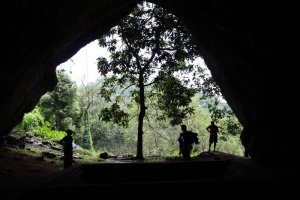
Human foragers were relying on tropical rainforests for resources since at least 20,000 years ago, or 10,000 years earlier than researchers had thought, according to a new study. Until now, researchers had not been able to find direct evidence of human occupation of rainforest regions before about 10,000 years ago. They had generally assumed that rainforest environments were too dangerous—and offered too little food—to be attractive to prehistoric foragers. But Patrick Roberts and colleagues analyzed carbon and oxygen isotopes from the fossilized tooth enamel of humans and animals found in Sri Lanka and discovered that their diets consisted primarily of plants from rainforests as opposed to plants from open habitats. Humans and animals such as porcupines, giant squirrels, and monkeys foraged the forest edges and semi-open rainforests in Sri Lanka, they say. They didn’t just use them occasionally, as some previous research had suggested, but relied heavily on rainforest resources, even as the rainforest climate and environment experienced dramatic fluxes.
An international research team has shed new light on the diet of some of the earliest recorded humans in Sri Lanka. The researchers from Oxford University, working with a team from Sri Lanka and the University of Bradford, analysed the carbon and oxygen isotopes in the teeth of 26 individuals, with the oldest dating back 20,000 years. They found that nearly all the teeth analysed suggested a diet largely sourced from the rainforest.
This study*, published in the early online edition of the journal, Science, shows that early modern humans adapted to living in the rainforest for long periods of time. Previously it was thought that humans did not occupy tropical forests for any length of time until 12,000 years after that date, and that the tropical forests were largely ‘pristine’, human-free environments until the Early Holocene, 8,000 years ago. Scholars reasoned that compared with more open landscapes, humans might have found rainforests too difficult to navigate, with less available food to hunt or catch.
The Science paper also notes, however, that previous archaeological research provides ‘tantalising hints’ of humans possibly occupying rainforest environments around 45,000 years ago. This earlier research is unclear as to whether those early human dwellers of the rainforest were engaging in a specialised activity or whether they entered the rainforest for only limited periods of time in certain seasons rather than remaining there all year round.
Co-author Professor Julia Lee-Thorp from Oxford University said: ‘The isotopic methodology applied in our study has already been successfully used to study how primates, including African great apes, adapt to their forest environment. However, this is the first time scientists have investigated ancient human fossils in a tropical forest context to see how our earliest ancestors survived in such a habitat.’
The researchers studied the fossilised teeth of 26 humans of a range of dates – from 20,000 to 3,000 years ago. All of the teeth were excavated from three archaeological sites in Sri Lanka, which are today surrounded by either dense rainforest or more open terrain. The analysis of the teeth showed that all of the humans had a diet sourced from slightly open ‘intermediate rainforest’ environments. Only two of them showed a recognisable signature of a diet found in open grassland. However, these two teeth were dated to around 3,000 years, the start of the Iron Age, when agriculture developed in the region. The new evidence published in this paper argues this shows just how adaptable our earliest ancestors were.
_______________________________________
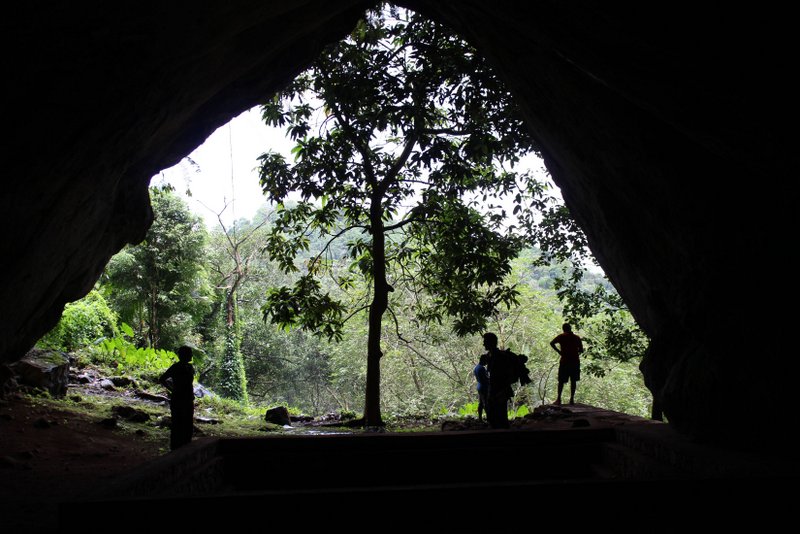 A view from Batadomba-lena rock shelter, the site at which the oldest fossils used in the study were found. Credit: Patrick Roberts
A view from Batadomba-lena rock shelter, the site at which the oldest fossils used in the study were found. Credit: Patrick Roberts
______________________________________
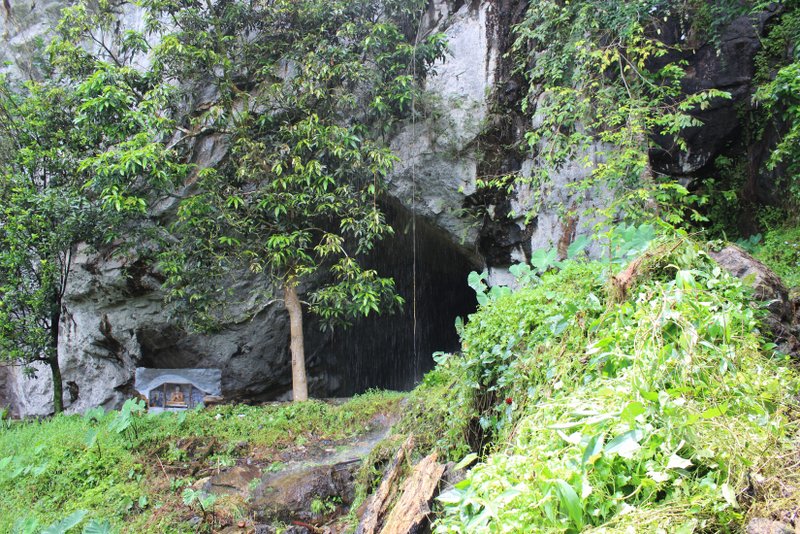 The site of Batadomba-lena where the oldest human teeth (c. 20,000 years old) used in the study were excavated. Credit: Patrick Roberts
The site of Batadomba-lena where the oldest human teeth (c. 20,000 years old) used in the study were excavated. Credit: Patrick Roberts
__________________________________________________
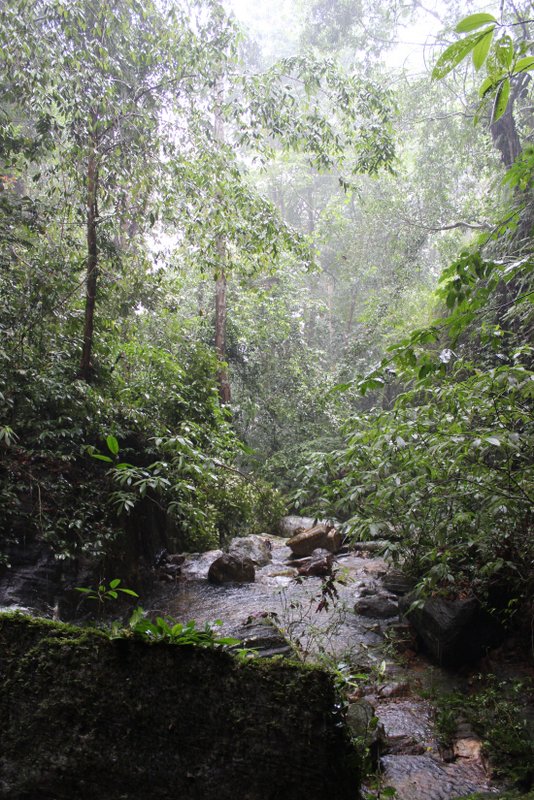 Sri Lankan wet zone rainforest, near Batadomba-lena rock shelter. Credit: Patrick Roberts
Sri Lankan wet zone rainforest, near Batadomba-lena rock shelter. Credit: Patrick Roberts
__________________________________________________
Lead author, Patrick Roberts, a doctoral student specialising in the investigation of early human adaptations from Oxford’s Research Laboratory for Archaeology and the History of Art, said: ‘This is the first study to directly test how much early human forest foragers depended on the rainforest for their diet. The results are significant in showing that early humans in Sri Lanka were able to live almost entirely on food found in the rainforest without the need to move into other environments. Our earliest human ancestors were clearly able to successfully adapt to different extreme environments.’
Co-author Professor Mike Petraglia from Oxford University said: “Our research provides a clear timeline showing the deep level of interaction that early humans had with the rainforest in South Asia. We need further research to see if this pattern was also followed in other similar environments in Southeast Asia, Melanesia, Australasia and Africa.”
__________________________________________________
*Direct evidence for human reliance on rainforest resources in late Pleistocene Sri Lanka, is by Patrick Roberts, Nimal Perera, Osham Wedage, Siran Deraniyagala, Jude Perera, Saman Eregama, Andrew Gledhill, Michael Petraglia and Julia Lee-Thorp.
The paper was co-authored by the University of Oxford; the Postgraduate Institute of Archaeology, Sri Lanka; Department of Archaeology, Sri Lanka, and the University of Bradford.
Source: University of Oxford and AAAS press releases.
__________________________________________________
Read about the most fascinating discoveries with a premium subscription to Popular Archaeology Magazine. Find out what Popular Archaeology Magazine is all about. AND MORE:
On the go? Get the smartphone version of Popular Archaeology as an app or as an ebook.
Just released!
The special new premium quality print edition of Popular Archaeology Magazine. A beautiful volume for the coffee table.
Travel and learn with Far Horizons.
____________________________________________
Popular Archaeology’s annual Discovery Edition eBook is a selection of the best stories published in Popular Archaeology Magazine in past issues, with an emphasis on some of the most significant, groundbreaking, or fascinating discoveries in the fields of archaeology and paleoanthropology and related fields. At least some of the articles have been updated or revised specifically for the Discovery edition. We can confidently say that there is no other single issue of an archaeology-related magazine, paper print or online, that contains as much major feature article content as this one. The latest issue, volume 2, has just been released. Go to the Discovery edition page for more information.

